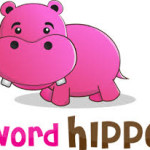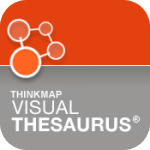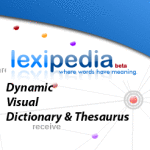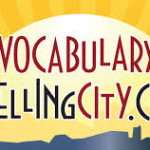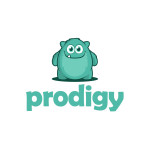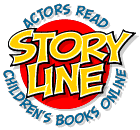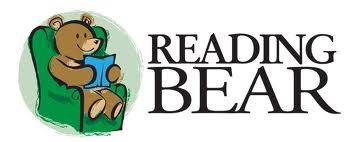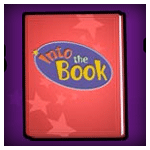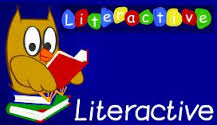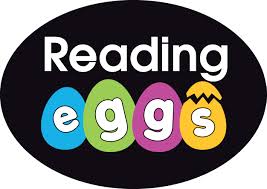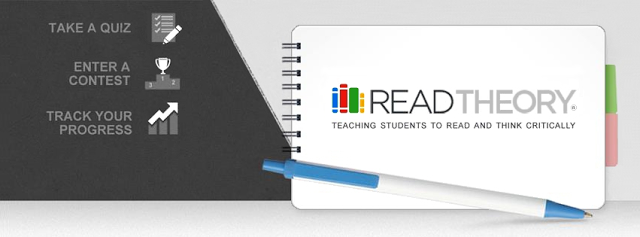
Reading ELA
(Scroll to bottom of page to see some of our favorite reading sites.)
Reading aloud is one of the most important things parents and teachers can do with their children. Reading aloud builds many important foundational skills, introduces vocabulary, provides a model of fluent, expressive reading, and helps children recognize what reading for pleasure is all about.
Teachers support reading through purposeful and meaningful instructional strategies. The National Reading Panel Report (National Institute of Child Health and Human Development [NICHD], 2000) summarized several decades of scientific research that clearly shows effective reading instruction addresses five critical areas:
• Phonemic awareness
• Phonics
• Fluency
• Vocabulary
• Comprehension
These five areas were incorporated into the No Child Left Behind Act and the Reading First
initiative as essential components of effective reading instruction.
Phonemic Awareness
What is a phoneme?
A phoneme is the smallest unit of sound in a word. For example, the word cat is made up
of three phonemes (or three sounds): /c/ /a/ and /t/. The word fish is also made up of three
phonemes (or three sounds) even though fish has four letters: /f/ /i/ /sh/.
Test your phoneme knowledge: How many phonemes are in the word school? How many
phonemes are in the word family? What is phonemic awareness?
Phonemic awareness is the knowledge that words are made up of a combination of individual sounds. For example, the word cat is made up of three sounds (phonemes) /c/ /a/ and /t/. When these three sounds are combined fluidly, they make up the word cat. If a child knows that cat, car, and caboose all have the same sound at the beginning of the word, she has phonemic awareness. In other words, she is aware that the /c/ sound (phoneme) begins each of those three words. Phonemic awareness is more than recognizing sounds. It also includes the ability to hold
on to those sounds, blend them successfully into words, and take them apart again. For example, in addition to the knowledge that the word cat has three separate sounds, phonemic awareness is the ability to blend these three sounds together to form the word cat and, when asked, to identify and separate the sounds within the word.
Do all children need instruction in phonemic awareness?
Some children have a good sense of phonemic awareness, but to differing degrees. It is important to determine the child’s level before beginning instruction. While all reading programs should devote some time to phonemic instruction, phonemic awareness is usually acquired naturally through exposure to print. The NRP found that during the kindergarten year, 18 hours total of phonemic awareness instruction — just 30 minutes a week, six minutes a day — provided maximum advantage.
Phonics
What is phonics?
Phonics is the relationship between a specific letter and its sound, only as it relates to the written word. Phonics is used, for example, when a reader comes across an unknown word. With knowledge of phonics, he can try to read the word by focusing on the specific
sound of each letter or combination of letters. For example, if a child does not recognize the word chant, he might break the word apart into pieces, such as /ch/ /a/ /n/ /t/ (or /ch/ /a/ /nt/, or /ch/ /ant/), assigning an appropriate sound to each separate letter or combination of letters. Then, the child combines those sounds to create the word chant.
Phonics is also used in writing, or encoding text. For instance, if a child is trying to spell smart, she might begin with the /s/ sound and write s. Then, she goes to the next sound /m/ and writes m, and so on. An early phonics learner often achieves a close approximation of correct spelling rather than complete accuracy. For example, she may attempt to spell the word smart using the method above but end up with smrt, simply because she only heard the dominant /r/ sound in the /ar/ sound-letter combination.
What is phonological awareness?
Phonological awareness is the knowledge that there are patterns within words that can aid in both reading and writing. For example, those who have good phonological awareness can use rhyme, beginning and ending sounds, specific phonemes, etc. to read and write
words.
Does learning phonics inhibit reading comprehension?
No. If a child learns to identify the relationship between the sounds of our language and letters, he will have an easier time identifying words, leading to improved reading comprehension. Failure to master phonics is the number one reason that children have difficulty learning to read. However, phonics instruction does have limitations, especially since English does not have a pure phonetic base. The most obvious example of this is sounding out the words cough, though, tough, and through. A successful reading program should include both explicit phonics instruction and comprehension instruction. One without the other can delay or impede success in learning how to read.
How important is phonics instruction?
According to the NRP, systematic phonics instruction is only one component of the reading process — a means to an end. Children need to be able to blend sounds together to decode words, and they need to break spoken words into their basic sounds in order to write them. However, phonics should never become the overriding component in any reading program.
Fluency
What is fluency?
Fluency is the ability to read text accurately and smoothly. When fluent readers read aloud, their expression, intonation, and pacing sound natural — much like speaking. This does not mean that fluent readers never make mistakes. Fluency develops from reading practice. The same reader may read a familiar text fluently and a new, more challenging text less fluently.
Why is fluency important?
Since fluency depends on higher word recognition skills, it helps children move from decoding words to sight-reading. This means that less energy is spent on deciphering each word and more is spent on comprehending what is read. If children are struggling to decode individual words, they cannot concentrate on other strategies that support their overall understanding of what they read.
How does fluency increase?
Practice, practice, practice. Repeated oral reading is the best way for children to improve their fluency. This can include re-reading a familiar text several times, listening to models of fluent reading, or engaging in choral, or unison reading with a big book. Choose books that children can read with a high degree of success. If the book is too difficult, children will be bogged down with vocabulary and comprehension questions
and their fluency will be hindered.
Vocabulary
What role does vocabulary play in learning to read?
When children learn to read, they begin to understand that the words on the page correspond to the words they encounter every day in spoken English. That’s why it’s much easier for children to make sense of written words that are already part of their oral language. While we don’t have to know every word on the page to understand what we are reading, too many new or difficult words make comprehension impossible. As
children’s reading level improves, so does the number of words they need to know.
How do children learn new words?
Children increase their vocabulary through both direct and indirect instruction. Children continually learn new words indirectly through listening and speaking to the people around them, being read to by others, and reading on their own. Sometimes children need to be taught new words explicitly, especially when they are crucial to their understanding of a story or concept. Study in content areas, such as science and social studies, adds to a child’s vocabulary development.
Text Comprehension
What is text comprehension?
Text comprehension is the interaction that happens between reader and text. More than merely decoding words on a page, comprehension is the intentional thinking process that occurs as we read — it’s what reading is all about!
What strategies support comprehension?
Good readers are purposeful and active. They use a wide variety of strategies, often simultaneously, to create meaning from text. Some of the most important are:
• Monitoring comprehension: Successful readers know when they understand a passage and when they don’t. When they don’t understand, they know to pause and utilize strategies to improve their understanding.
• Using prior knowledge: Thinking about what is already known about the subject helps readers make connections between the story and their knowledge.
• Making predictions: Good readers often make predictions as they read through a story, using both the knowledge they bring to a text as well as what they can derive from the text.
• Questioning: When children ask questions about what they read and subsequently search for answers, they are interacting with the text to construct meaning. Good questions are based on a child’s knowledge base and what further information she desires.
• Recognizing story structure: Children will understand a story better if they understand how it is organized (i.e., setting, plot, characters, and themes).
• Summarizing: When they summarize a story, readers determine the main idea and important information and use their own words to demonstrate a real understanding of the text.
When does comprehension instruction begin?
Since the ultimate goal of reading is to interact with the text, comprehension should be emphasized from the very beginning, not only after a child has mastered decoding skills. For example, reading aloud provides an opportunity for children to hear a story and respond to the content — the characters, their feelings and motivations, and the setting, and to relate it to their own experiences. Children begin from an early point to understand that comprehension is the point of reading.
******************************************************************************************************************************************
After students learn to read it is important they develop their fluency skills to be able to skillfully transition to reading to learn. Fluency is a critical skill for a young reader — evidence that he is comfortable “decoding” the words on the page and can read aloud with expression. If your child is struggling with fluency, there are simple things you can do at home to help build confidence and skills. Reading fluency is a child’s ability to read a book or other text correctly, quickly, and with expression. A fluent reader doesn’t have to stop and “decode” each word. Rather, most of the words can be read automatically. This means the reader can focus his attention on what the story or text means. Fluency is the bridge between decoding words and understanding what has been read.
Once the reader shifts into reading to learn…building vocabulary and comprehension, finding books of high interest, and a desire to consume the learning will be the key components of advancing the reader as they transition to higher lexiles which will lead to continued success.
Florida Center for Reading has a wonderful web resource for educators. Their mission is to disseminate information about research-based practices related to literacy instruction and assessment for children in pre-school through 12th grade. To this end, FCRR has provided a selection of resources and materials of particular interest to education practitioners.
This includes a number of classroom activities developed by teachers at FCRR for use in kindergarten through fifth grade classrooms and pedagogical information for empowering teachers with the skills and knowledge for effective instruction in the classroom. These materials have been developed through the Center’s commitment to applied research projects with the purpose of providing information that can be used to improve reading instruction to all students. Additional resources such as a glossary of terms and the FCRR report on corrective reading may provide further insight into the usefulness of the materials provided.
The Helping Early Literacy with Practice Strategies (HELPS) Programs integrate easy-to-use instructional strategies that are specifically designed to improve students’ reading fluency.
Teachers and reading researchers generally agree that the essential components of early elementary reading instruction should target phonics, phonemic awareness, fluency, comprehension, and vocabulary. However, many educators argue that reading fluency is commonly neglected as a part of a student’s core reading curriculum. As such, the primary goal of HELPS Programs is to strengthen students’ reading fluency. As students improve reading fluency, they are better able to focus on and improve other important reading skills, including comprehension.
Because all students must develop reading fluency in order to become more successful readers, HELPS Programs can be used with students of all reading-ability levels. Furthermore, HELPS Programs are designed so that multiple types of teachers (such as regular education teachers, special education teachers, teacher assistants, school psychologists, reading specialists, librarians, and school volunteers) can implement HELPS with the student (or students) who will likely benefit most from the Program.
ReadWorks is a non-profit site committed to solving the nation’s reading comprehension crisis by giving teachers the research-proven tools and support they need to improve the academic achievement of their students.
ReadWorks provides research-based units, lessons, and authentic, leveled non-fiction and literary passages directly to educators online, for free, to be shared broadly.
Stamina is crucial in becoming a strong reader. Let your students practice independently maintaining reading focus over longer periods of time with this collection of passages.
The ReadWorks curriculum is aligned to the Common Core State Standards and the standards of all 50 states. Most importantly, ReadWorks is faithful to the most effective research-proven instructional practices in reading comprehension.
Resources:
http://www.learningpt.org/pdfs/literacy/components.pdf



